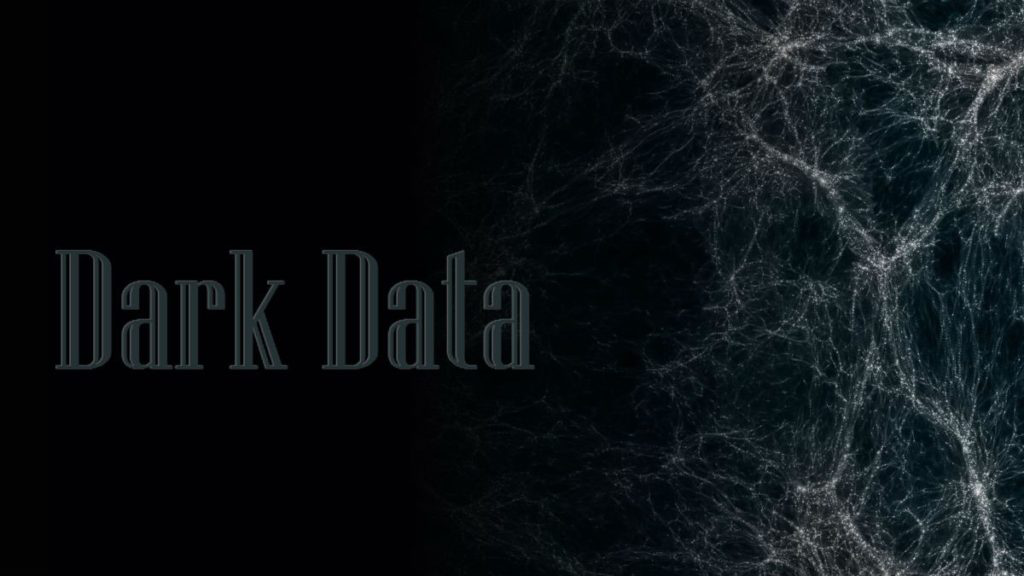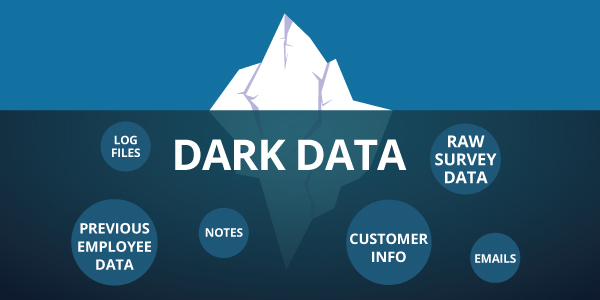We are living in a world where data is a currency, offering businesses leverage in the market. Hence data ought to be treated as a resource that needs to be exploited to the maximum potential.
Normally, companies make use of structured data to collect information. However, according to a study conducted by IBM, only 20% of data is structured data, and this number is projected to dip even lower. It is estimated that by 2020, 93% of the total available data would be dark and unstructured.
This information brings us to the question – What is dark data? What is its future scope? What are the risks and advantages associated with dark data?
Let’s have a look:
Let’s get one thing straight: dark data, despite the name, is not all bad. According to Gartner, who first coined the term ‘Dark Data’:
Dark Data is the information assets organizations collect, process, and store during regular business activities, but generally fail to use for other purposes (for example, analytics, business relationships, and direct monetizing).
Further, Technopedia defines Dark Data as:
A type of unstructured, untagged, and untapped data, which is found in data repositories and has not been analyzed or processed. It is similar to Big Data but differs in how it is mostly neglected by business and IT administrators in terms of its value
This basically means that dark data refers to datasets that are kept in the dark. It contains data types and objects that are yet to be analyzed or utilized by a business for gaining a competitive edge or making an executive decision. Hence dark data offers great potential, as this information is often left unexplored. So while it is called ‘dark’ data, it could actually be a ray of hope for certain businesses!
Dark data contains the following three components:
- Traditional unstructured data
- Non-traditional unstructured data
- Data available on the deep web
Where Can One Find Dark Data?
The vast majority of unstructured, untapped data, which is yet to be analyzed, is stored in the data repositories. Dark data is located within the data archives and logs of data repositories for a ‘just in case’ scenario where it may be required in the future.
Why is Dark Data Left Un-analyzed?
According to a 2011 study conducted by IDC (International Data Corporation), nearly 90% of the unstructured data remains unexplored. The reason for such a significant amount of data being unanalyzed could be as follows:
- Companies may generate way more data than they can interpret.
- Organizations may not have the means to analyze data efficiently.
- There may be an incompatibility between the analytical tools and the data types or formats.
The cost and resources required to analyze dark data may be too high.
Some broad categories of dark data include:
- Log files related to systems, servers, architecture, etc.
- Customer profile and information
- Geo-location data
- Previous employee data
- Customer call records or logs
- Raw survey data
- Financial statements
- Email correspondences
- Surveillance video footage
- Old or draft version of important files
- Presentations, old documents, notes, etc.
What is Dark Data Analytics?
Dark data analytics involves the interpretation of raw, text-based, unstructured data, which has not been tapped or analyzed before. Such datasets include text messages, audios, videos, emails, images, and more. Analyzing dark data brings to light the various trends, patterns, and relationships that could form a vital part of business strategies.
Dark data analytics can also extend to the deep web, which contains online information that cannot be accessed by surface web users. The deep web also covers the dark web, a set of websites and pages that regular search engines are unable to index.
Advantages of Dark Data
The greatest advantage of dark data is that it offers information that regular business intelligence and analytical tools may miss out on. Therefore, organizations that utilize dark data are able to make better and more informed decisions regarding their future goals. Whether it is identifying a new target path, discovering new investment opportunities, reducing risks, or increasing the returns on investment, dark data analysis could offer a solution to them all.
As a result, organizations would be in a better position to understand user behavior and mold their business strategies accordingly.
Most importantly, dark data analysis provides companies with an unfair advantage over their competitors as they will have access to high-quality data before any other company. As such, businesses that can make use of dark data will flourish in the long run.
Issues With Dark Data
While dark data may bear its own set of advantages, it also contains a risk element as a result of the following:
- Source and Authenticity: Data obtained through dark analysis is vulnerable to information dilution, which makes it tough to determine its integrity and authenticity. The lack of transparency can put your business at risk of financial or brand-value loss along with a run-in with regulatory issues.
- Privacy issues: Global privacy law varies according to geography, especially in the case of audio and video data. Hence, it is important to know the privacy risks associated with dark data before analyzing it.
- Legal and regulatory risks: Dark data can also contain sensitive information such as credit card information or personally identifiable content. Hence, it can impose legal and financial liabilities on the company.
- Reputation damage: A breach in the database can cause companies to lose their reputation along with the trust they enjoy amongst their patrons.
- Cyber risks: The dark web is home to multiple cyber threats, and dark analysis can potentially expose your company to such elements.
Tips for Working With Dark Data
Here are a few risk-mitigating measures that can be followed while dealing with dark data:
- Periodical audits and database trimming
- Data encryption to ensure security
- Guidelines for data retention and self-disposal
- Constant assessment and inventory management
Summary
So far, dark data was an entire realm of data that was undiscovered due to the lack of technological tools. Now that dark data has finally come to light, it has brought about a radical transition in the way businesses operate. And further analysis of dark data is expected to open a whole new avenue that acts as a window to the future.
This is a Contributor Post. Opinions expressed here are opinions of the Contributor. Influencive does not endorse or review brands mentioned; does not and cannot investigate relationships with brands, products, and people mentioned and is up to the Contributor to disclose. Contributors, amongst other accounts and articles may be professional fee-based.




